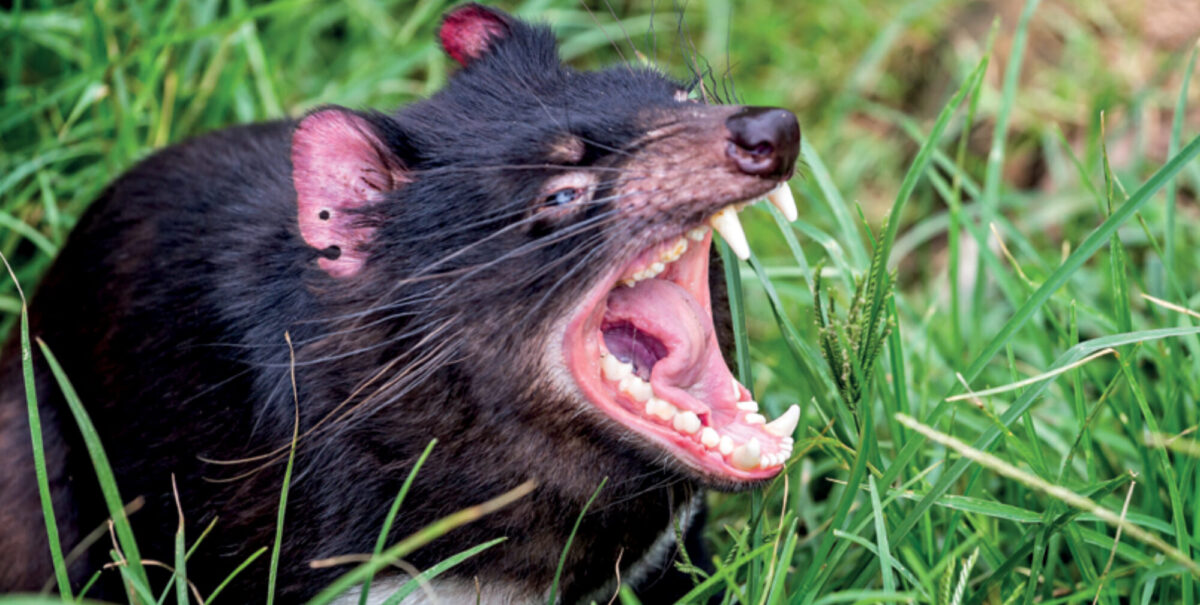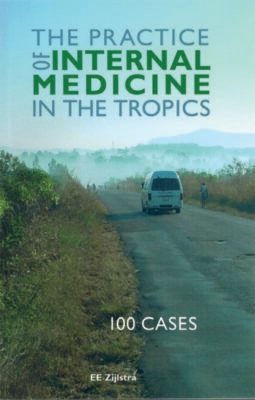Main content
While risk factors for cancer normally include smoking, dietary factors, exposure to chemicals and (UV) radiation, hereditary predisposition, microorganisms (particularly viruses), or combinations hereof, transmission by contagion may also occur. This is not uncommon in animals but less well known in humans.[1]
The best-known transmissible cancer is the Devil Facial Tumour Disease (DFTD) that occurs in Tasmanian devils, a carnivorous marsupial (Sarcophilus harrasii), so-called because when threatened it may go into a rage, producing guttural, spine-chilling growling sounds with teeth baring.[2] (Figure 1,2) It is estimated that 4 out of 5 animals are affected by DFTD, and this animal species is therefore at risk of extinction. The tumour is transmitted by fighting and biting, hence the involvement of the face, mainly around the mouth, which interferes with ability to eat. Eventually, the animal dies of starvation. There is no immune response. The lesion ulcerates and becomes friable; it can be easily dislodged and may enter the new host by implantation (as in an allograft).[3] The tumour is remarkably uniform in all cases sampled, showing the same chromosomal rearrangement that is characterized by the absence of X and Y chromosomes in both male and female animals. This and other chromosomal abnormalities suggest that the tumour does not originate from the individual animal’s own tissues.[3] While DFTD is a relatively new cancer (detected in 1996), the Canine Transmissible Venereal Tumour probably has been colonizing dogs for thousands of years and is thought to have reached its current state after millions of mutations.[1,4] The living cancer cells transplant themselves, even long after the death of the original animal. It affects the genitalia in both sexes; in male dogs, lesions on nose and mouth are more common, probably as the result of sniffing at female genitalia.[5]


Another intriguing example is the occurrence in soft shell clams (Mya arenaria) of a transmissible neoplasm of the hemolymphatic system behaving as a form of leukaemia. Transmission of this clonal cancer has occurred between clam beds that are hundreds of miles apart suggesting a thus far unidentified agent.[6]
In humans, cancer by contagion is rare, with the best-known example being the development of Kaposi’s sarcoma in a transplanted organ. Here it is thought that the KS occurs because of outgrowth of virus-infected tumour cells rather than by free virus.[7] There also is an example of a surgeon who cut himself while operating on a patient with a giant cell tumour and developed the same tumour afterwards.[8] Another example is the occurrence of metastatic breast cancer in four recipients of donor organs from a female donor who was thought to be medically free of disease.[9]
References
- Clonally transmissible cancer. [Internet]. Wikipedia. Wikimedia Foundation; 2023. Available from: https://en.wikipedia.org/wiki/Clonally_transmissible_cancer
- Tasmanian devil, facts and photos [Internet]. Animals. National Geographic; 2010. Available from: https://www.nationalgeographic.com/animals/mammals/facts/tasmanian-devil
- Pearse AM, Swift K. Allograft theory: transmission of devil facial-tumour disease. Nature. 2006 Feb 2;439(7076):549. doi: 10.1038/439549a. PMID: 16452970.
- Murgia C, Pritchard JK, Kim SY, et al. Clonal origin and evolution of a transmissible cancer. Cell. 2006 Aug 11;126(3):477-87. doi: 10.1016/j.cell.2006.05.051. PMID: 16901782; PMCID: PMC2593932.
- Strakova A, Baez-Ortega A, Wang J, et al. Sex disparity in oronasal presentations of canine transmissible venereal tumour. Vet Rec. 2022 Sep;191(5):e1794. doi: 10.1002/vetr.1794. Epub 2022 Jul 3. PMID: 35781651.
- Metzger MJ, Reinisch C, Sherry J, et al. Horizontal transmission of clonal cancer cells causes leukemia in soft-shell clams. Cell. 2015 Apr 9;161(2):255-63. doi: 10.1016/j.cell.2015.02.042. PMID: 25860608; PMCID: PMC4393529.
- Barozzi P, Luppi M, Facchetti F, et al. Post-transplant Kaposi sarcoma originates from the seeding of donor-derived progenitors. Nat Med. 2003 May;9(5):554-61. doi: 10.1038/nm862. Epub 2003 Apr 7. Erratum in: Nat Med. 2003 Jul;9(7):975. PMID: 12692543.
- Gärtner HV, Seidl C, Luckenbach C, et al. Genetic analysis of a sarcoma accidentally transplanted from a patient to a surgeon. N Engl J Med. 1996 Nov 14;335(20):1494-6. doi: 10.1056/NEJM199611143352004. PMID: 8890100.
- Matser YAH, Terpstra ML, Nadalin S, et al. Transmission of breast cancer by a single multiorgan donor to 4 transplant recipients. Am J Transplant. 2018 Jul;18(7):1810-1814. doi: 10.1111/ajt.14766. Epub 2018 Apr 27. PMID: 29633548.



















































